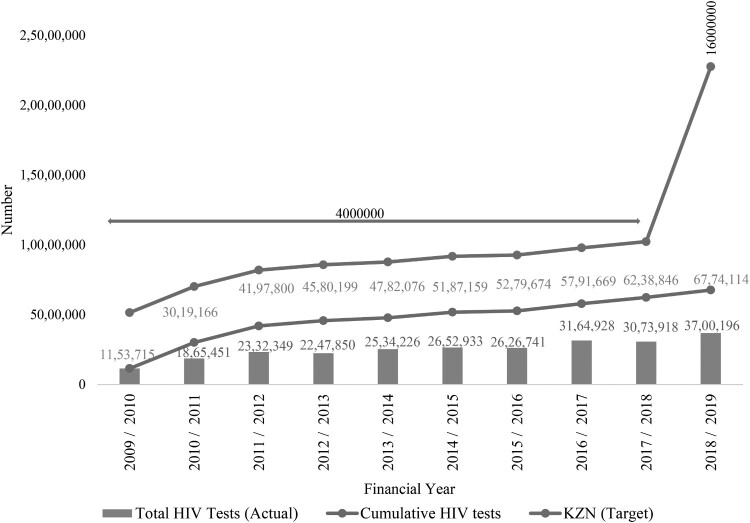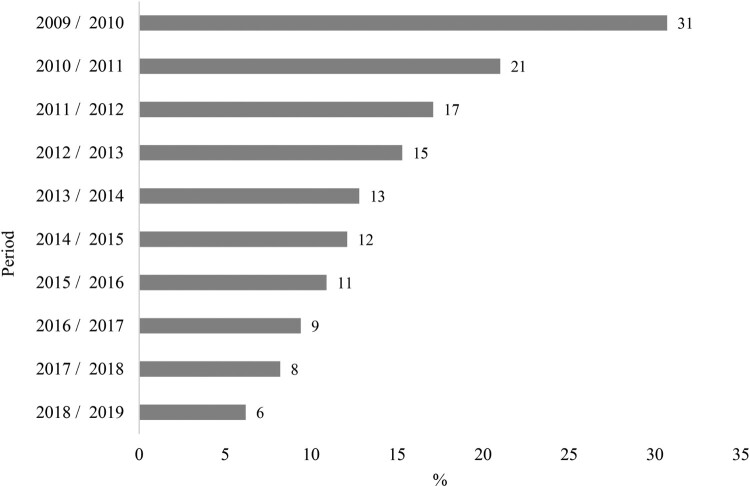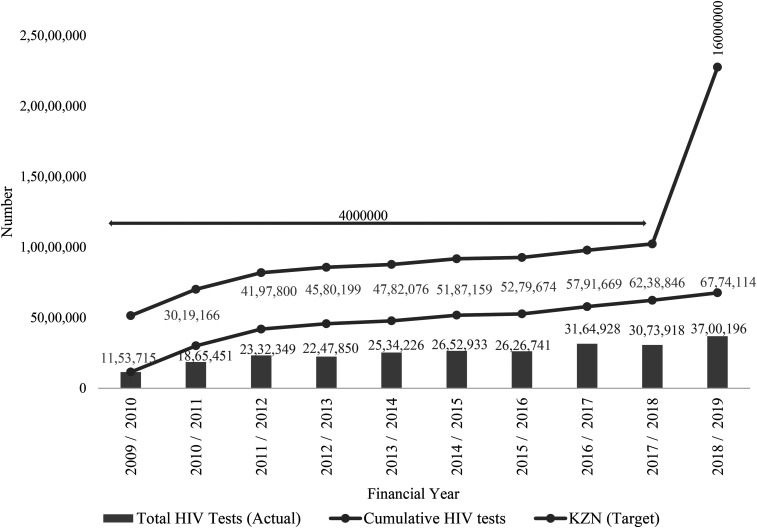Provision of HIV testing services and its impact on the HIV positivity rate in the public health sector in KwaZulu-Natal: a ten-year review.
Abstract
South Africa has been rated as having the most severe HIV epidemic in the world since it has one of the largest populations of people living with HIV (PLHIV). KwaZulu-Natal (KZN) is the epicentre of the HIV epidemic. The HIV test and treat services in the public health sector are critical to managing the epidemic and responding to the increase in HIV infections. The KwaZulu-Natal Department of Health (DOH) commissioned a review of the provision of HIV testing services in the province and aimed to investigate its impact on the HIV positivity rate over a ten-year period. The study was an ecological study design using data extracted from the Department's District Health Information System (DHIS). Descriptive analysis was conducted in addition to ANOVA and multiple regression analysis. The results of this study have shown that the total number of HIV tests conducted over the ten-year period in the province has increased with the highest number of HIV tests being conducted in the 2018/2019 MTEF year. ANOVA analysis indicates that there was a statistically significant difference in the total number of HIV tests conducted and the number of HIV tests per 100 000 population across the province's 11 districts (p < 0.001). Statistically significant differences were observed in the HIV testing rate and in the HIV positivity rate over the period (p < 0.001). Results from multiple regression analysis showed that the HIV testing rate per 100 000 population was the strongest predictor of the HIV positivity rate. HIV positivity among clients correlated negatively with the number of HIV tests conducted per 100 000 population (r = -0.823; p < 0.001) and the HIV testing rate (r = -0.324; p < 0.01). This study has found that HIV testing could have an impact on reducing the positivity rate of HIV in the province and is therefore an effective strategy in curbing the HIV epidemic. The KwaZulu-Natal Department of Health should ensure that strategies for implementing and maintaining HIV testing and treating services should continue at an accelerated rate in order to achieve the first 95 of the UNAIDS 2025 SDG target.




 求助内容:
求助内容: 应助结果提醒方式:
应助结果提醒方式:


